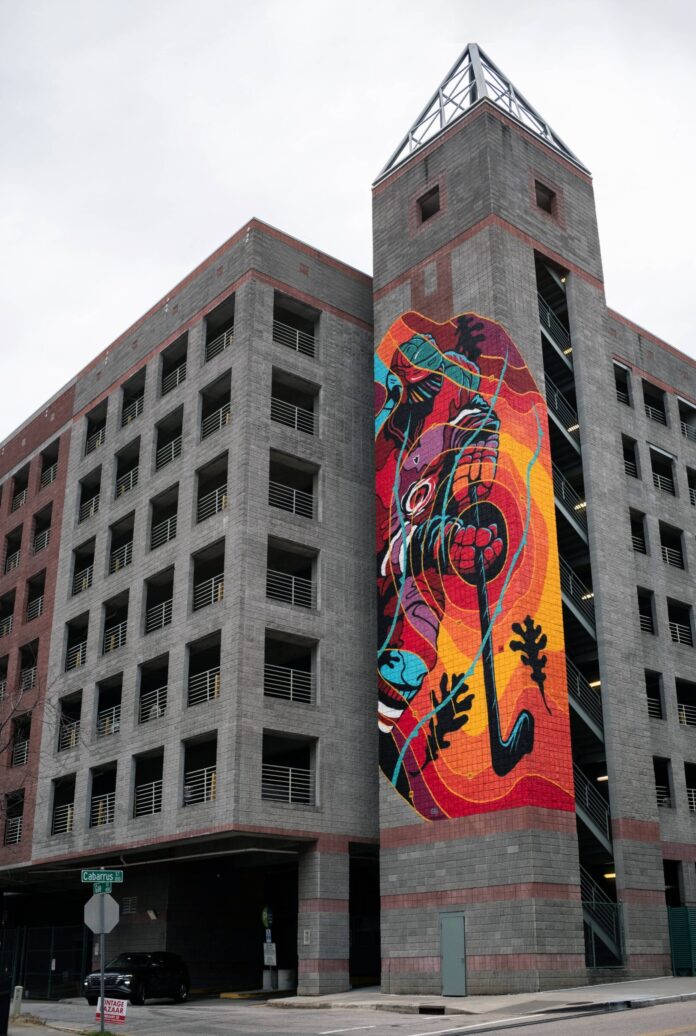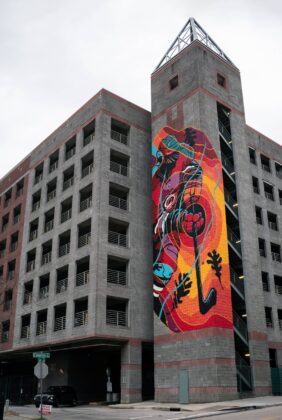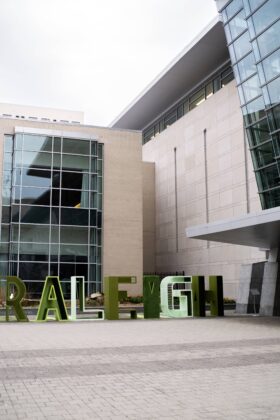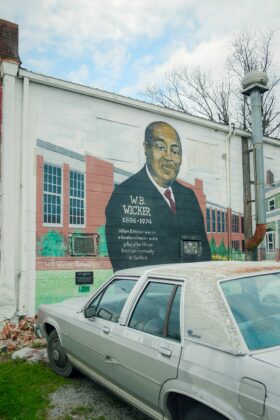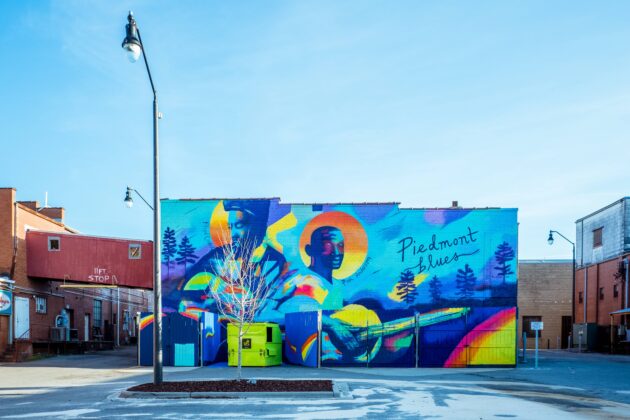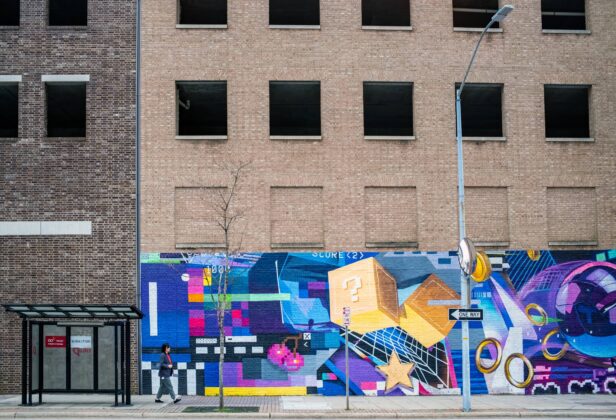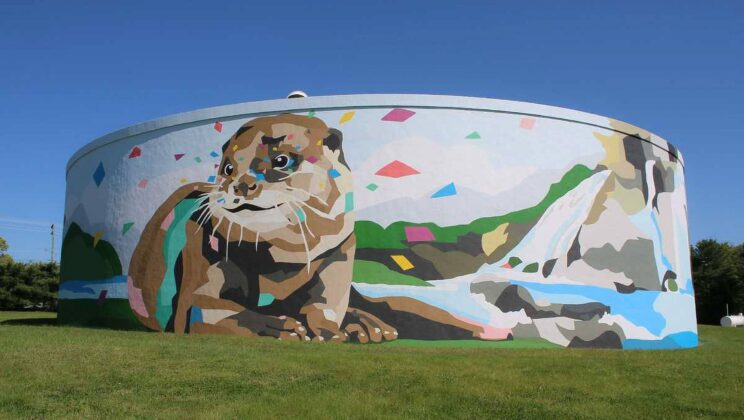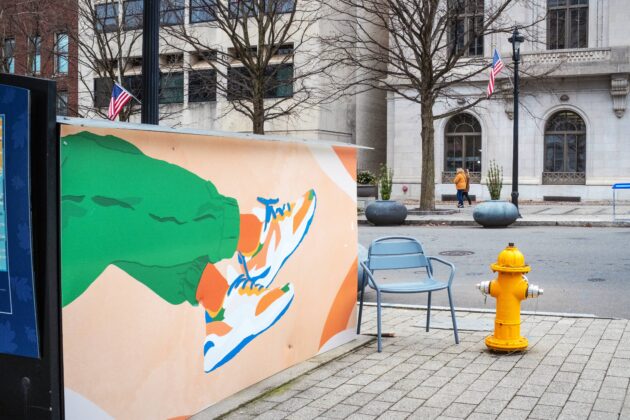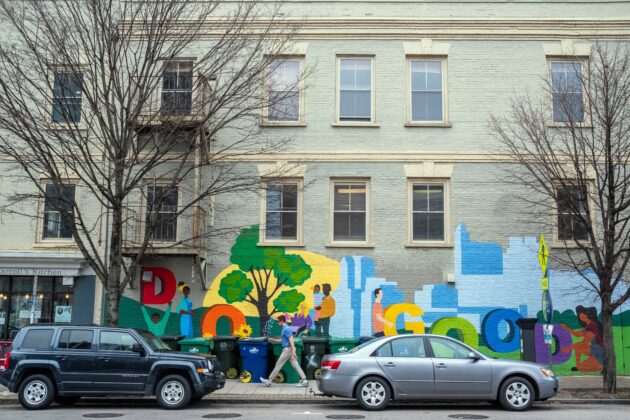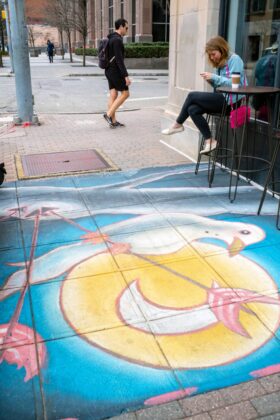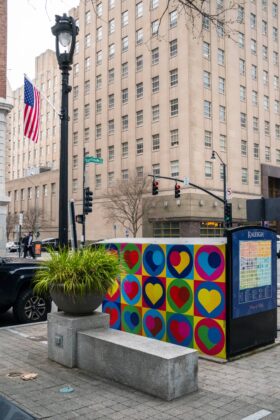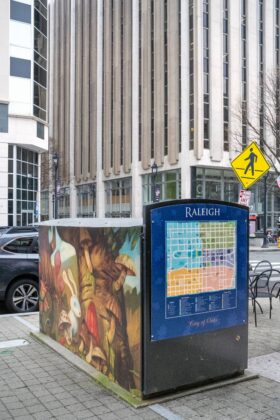“I found I could say things with color and shapes that I couldn’t say any other way—things I had no words for.” This quote, from artist Georgia O’Keefe, neighbors so many like it on the seemingly priceless value of art and its powers of communication, representation, unification, introspection, and everyday pleasantry, so much that nothing, not even government, can resist the conversation.
In summer 2017, Municipal Equation, the League’s podcast about cities and towns adapting to change, ran an episode exploring “public art”—that is, generally, art placed in a public space following some kind of public process—and why municipal governments across North Carolina have been inspired to add public art to the local scene. Just prior, that spring, the podcast examined a downtown mural trail the City of Sanford commissioned to celebrate local, historical heroes and events.
The bottom line, municipal officials and public art experts told the podcast, is that communities can feel a sense of refreshment, pride, fellowship and, to reference O’Keefe, communicative new color with the placement of art in public spaces and on big downtown walls, which may require some kind of local government involvement or approval. Those episodes are online at https://municipalequation.libsyn.com.
But the question of exactly how a local government can facilitate public art received new attention recently, when the NC Local Government Budget Association’s Winter Conference in Winston-Salem featured a live recording of Municipal Equation on the very subject. This writer moderated a panel of two municipal government professionals who help to responsibly add public art to their cities.
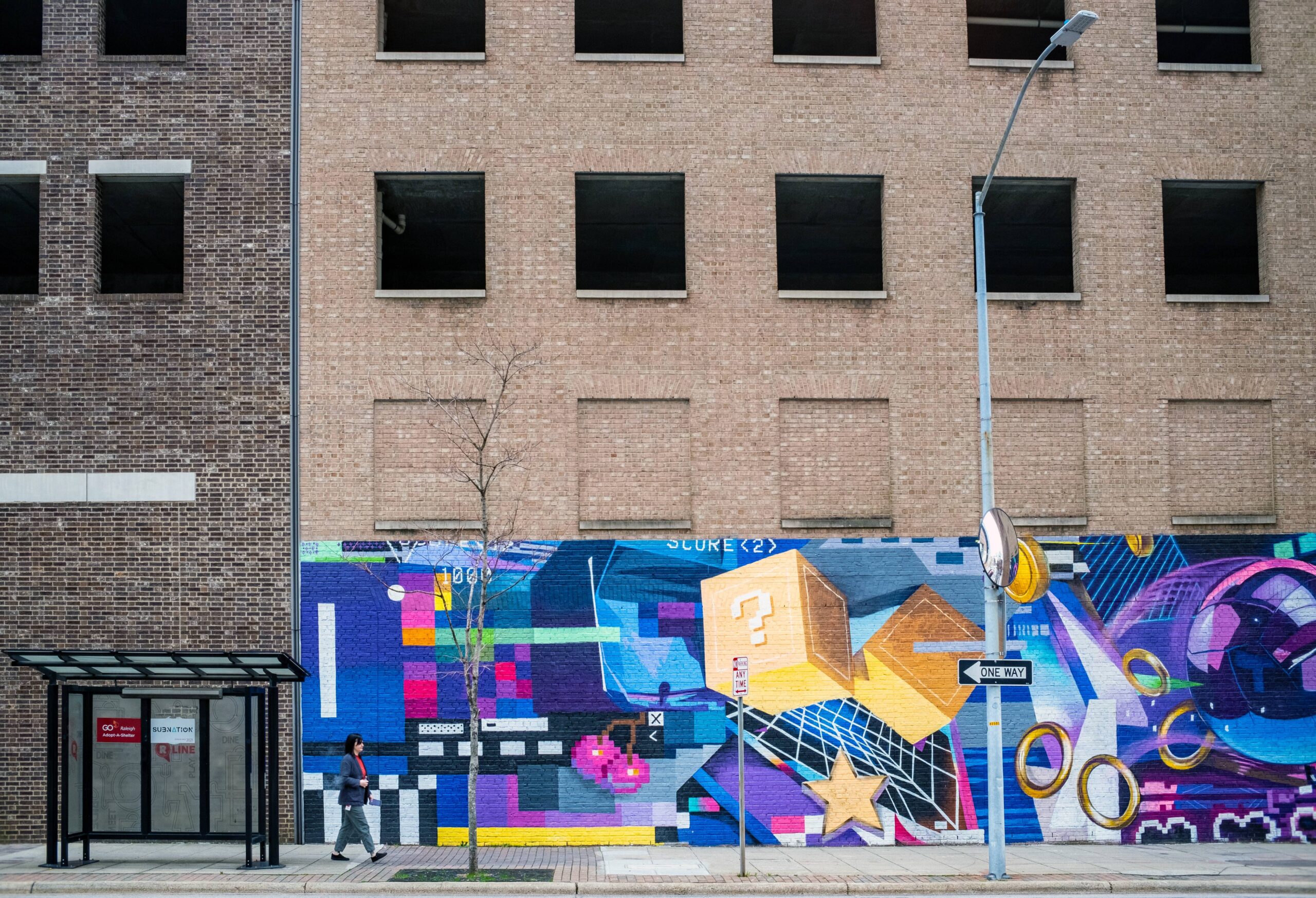 “I generally give the definition of art in the public realm,” said Kelly Bennett, certified planner and Winston-Salem/Forsyth County Public Art Commission staff liaison, when asked to define public art. “You could consider art that’s privately funded in a public space public art, but what we generally go with is art that is publicly funded in a public space.”
“I generally give the definition of art in the public realm,” said Kelly Bennett, certified planner and Winston-Salem/Forsyth County Public Art Commission staff liaison, when asked to define public art. “You could consider art that’s privately funded in a public space public art, but what we generally go with is art that is publicly funded in a public space.”
When the City of Sanford, for instance, pursued its public mural project, private funds ended up covering tabs, inclusive of the hired muralist’s rate. But many public art projects, like those Bennett deals with, might involve public funds, which motivates oversight, method, and inclusion of community voice.
“For us, there is still that community component, because it is publicly funded,” said Chris Lange, art and transit program administrator at Charlotte-Area Transit System (CATS). Lange joined Bennett on the panel.
Winston-Salem, itself branded the City of Arts & Innovation, and Forsyth County together provide resources for Bennett’s office, which has been active for roughly seven years. Occupancy tax money, directed toward tourism uses, has been a substantial source of the funding. Funds have also come via a bond referendum and a project that brought in private dollars, which “turned into a really cool project on a water tank,” Bennett said. The once-plain tank was completely transformed with an appealing otter mural and won television media attention when it took first-place in a national contest focused on municipal water facilities.
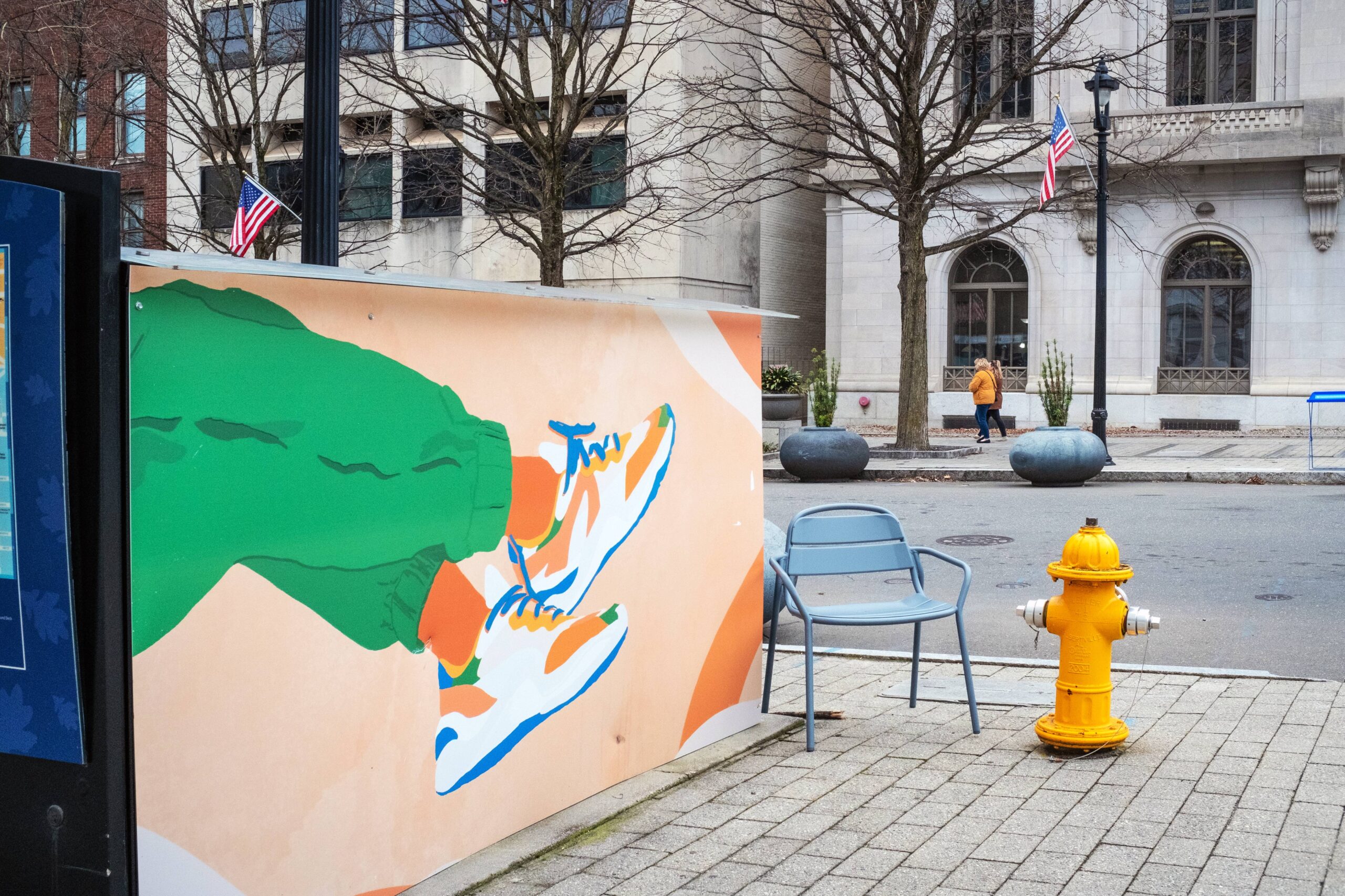 “We have also funded (public art) in partnership with a developer who was building a residential building downtown and wanted to see public art nearby,” Bennett said. The private developer contributed half the funds toward a sculpture placement on the city block.
“We have also funded (public art) in partnership with a developer who was building a residential building downtown and wanted to see public art nearby,” Bennett said. The private developer contributed half the funds toward a sculpture placement on the city block.
A “percent for art” is another way many local governments fund public art. In Raleigh, 1% of municipal construction funds are set aside for public art. The city created a Public Art and Design Board to oversee implementation.
For CATS, Lange noted a similar approach; capital improvement projects include a percent allocated for art. Temporary operating budget allocations have also contributed.
Lange’s office is centered around public art in a transit context—light rail stations, park-and-rides, bus stops, and so on. Another office with the City of Charlotte also gets a percent for art, its work dealing with bond packages and vertical constructions among other things.
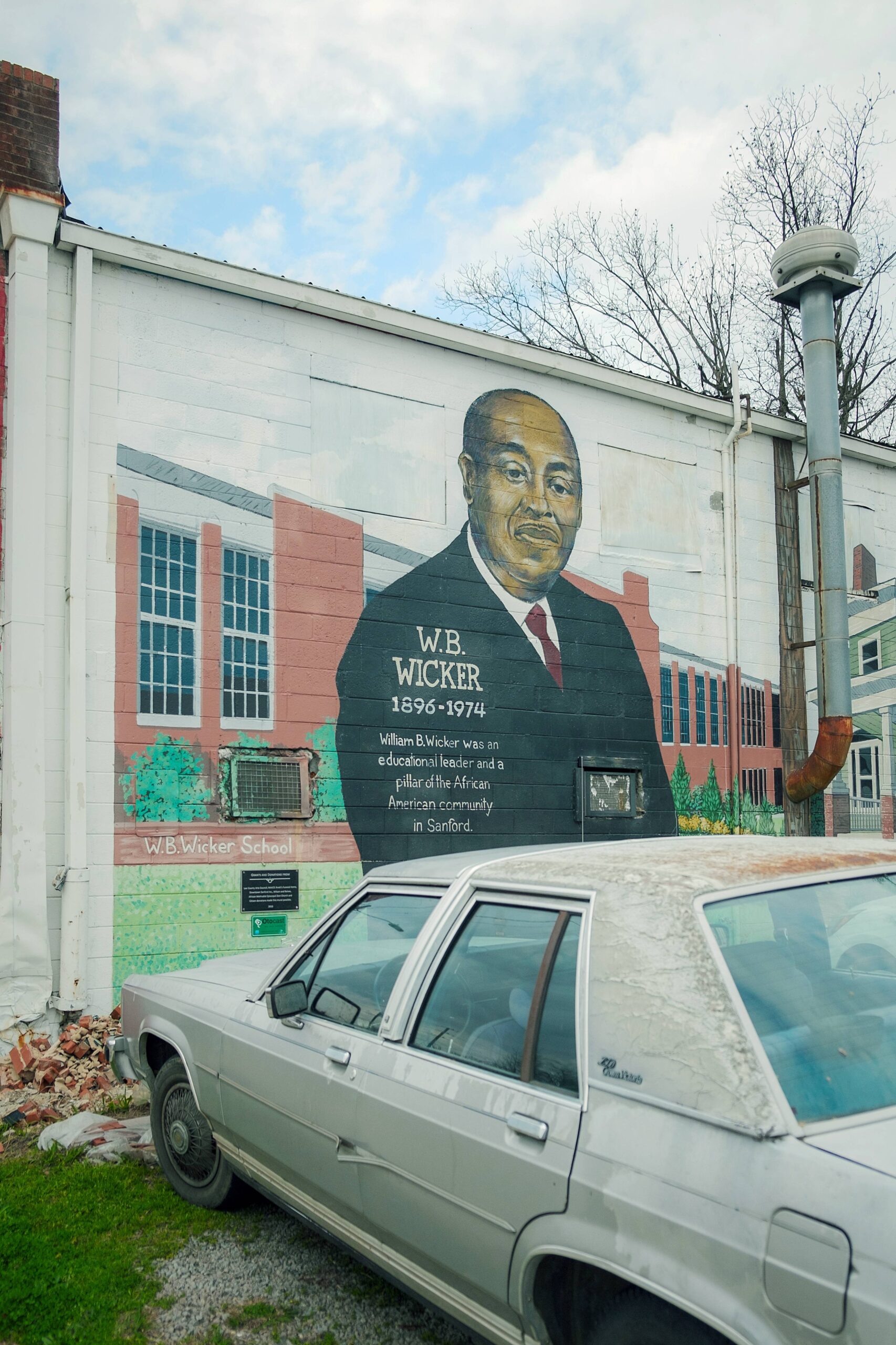 Expressions of public art—remember, it’s art—can vary widely. To barely scratch the surface: sculptures in parks or downtown plazas; graphic wraps to improve the looks of utility boxes or other unsightly infrastructure; sidewalks and crosswalks dazzled with painted designs; dynamic, mechanical whirligigs or installations with interactive components; and the classic, popular mural.
Expressions of public art—remember, it’s art—can vary widely. To barely scratch the surface: sculptures in parks or downtown plazas; graphic wraps to improve the looks of utility boxes or other unsightly infrastructure; sidewalks and crosswalks dazzled with painted designs; dynamic, mechanical whirligigs or installations with interactive components; and the classic, popular mural.
Municipal Equation asked the panelists how something as seemingly simple and straightforward as a mural—on, say, the side of a facilities building—is brought to fruition with government gears. For Lange’s office, it begins with a call to artists and a request-for-qualifications. “From there we will work with our advisory committee to form a selection panel,” Lange continued, explaining that people from around the community who are knowledgeable about art—art teachers, museum experts and so on—would make up the selection panel. Once an artist is selected for the mural, the city will work with that artist to develop a design and ultimately enter into a contract so work can begin.
Bennett said his office follows similar steps for smaller projects, which in the process may involve candidate artists submitting examples of past work to give the city an idea of caliber and style. For larger projects, the government’s purchasing policy requires formal proposals.
 An obvious question followed for the panelists: Is there any weight given to local artists? Perfectly qualified, proven artists from around the country might be submitting interest, but there might also be significance in working with the city’s own talent.
An obvious question followed for the panelists: Is there any weight given to local artists? Perfectly qualified, proven artists from around the country might be submitting interest, but there might also be significance in working with the city’s own talent.
“Trying to make those local connections is really important,” Lange said, noting his office takes a “concentric circle” approach in reaching artists for projects, starting locally and working outward. “We do give favoritism to local artists,” he said, adding that about half of the artists his office has worked with have been North Carolina-based or local.
There are numerous ways to reach local artists, Bennett indicated, including special listservs. He named the North Carolina Arts Council’s listserv among them. Also, local artists provide their email addresses, which can be stored and used for future calls, when applying for projects. The local arts councils, too, are great resources for connections to area artists and may be particularly great relationships for municipalities with limited staffing and resources. “Now we have a pretty large list of artists, who are on the lookout for our projects,” Bennett said.
He and Lange discussed numerous additional facets of public art development, maintenance, and budgeting during the session, which also included a cautionary tale for cities and towns in selecting artists to work with.
The full episode of the podcast, “So You Want to Commission a Mural,” is online: https://municipalequation.libsyn.com.


